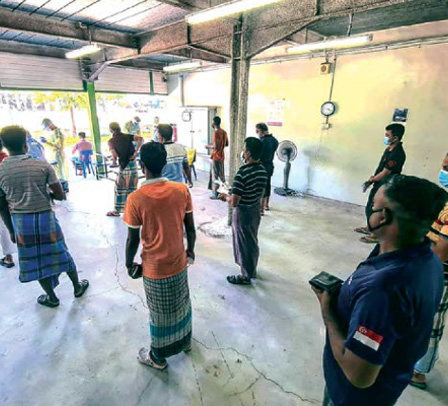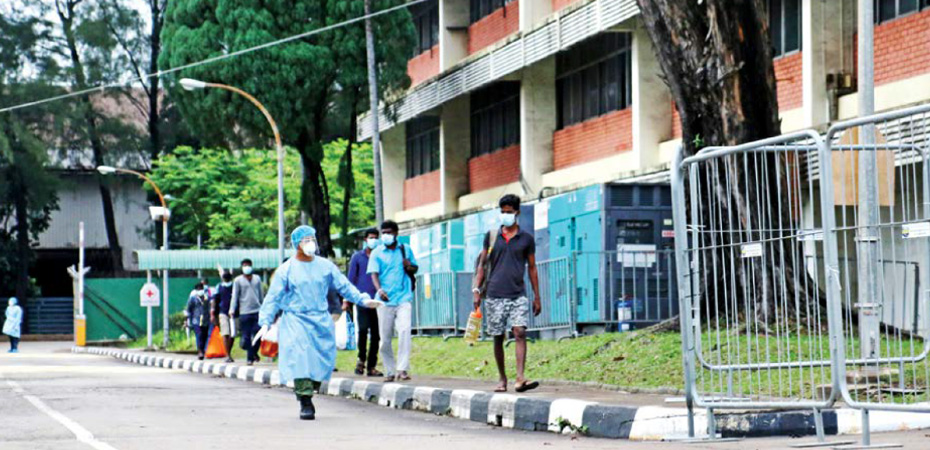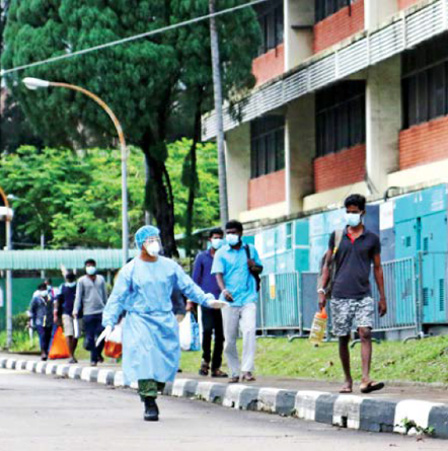There was an outbreak of COVID-19 infections among the migrant workers housed in 43 Purpose-Built Dormitories (PBDs). The 300,000 residents in these dormitories made up the vast majority of the 370,000 work permit holders we had at that time. They were an important part of the workforce in sectors such as construction, shipbuilding and process industries.
There were four COVID-19 cases detected across the 43 PBDs as at 30 March 2020. But just two weeks later, by 16 April 2020, the cases there had increased exponentially to almost 3,000. They accounted for about 70% of the cases nationwide and this put a spotlight on the magnitude of the contagion in the dormitories.

|
SPIKE IN SINGAPORE'S CASE NUMBERS |
Source: MOH COVID-19 Statistics
The first four infections - detected in S11 @ Punggol and Westlite Toh Guan dormitories - had already led to both dormitories being declared as clusters. By 5 April 2020, all their 20,000 residents were under quarantine. It was mind-boggling to think about what would be required to deal with the healthcare crisis that was looming, not to mention the potential economic consequences.

Migrant workers being quarantined in a Purpose-Built Dormitory that had been gazetted as an isolation area.
Photo Credit: LTC (RET) Chua Moh Tean Alex
At that time, there was still much about the virus that was not known. No one knew for sure whether asymptomatic people could be infected, or how transmissible or resilient the virus was. What was clear was that it was critically important that the spread of the virus was contained when vaccinations were still not available, and that the migrant workers could still carry out essential work.
With the surge in COVID cases, the PBDs were gazetted as “isolation areas” and the residents placed under quarantine. MOM focused its operations on two areas. First, the raging outbreak in a handful of dormitories had to be contained. Second, migrant workers performing essential services, such as sanitation, logistics and construction had to be moved out of the dormitories to other living quarters so that their work could continue during the “Circuit Breaker”.


Migrant workers arriving at SAF Tanjong Gul camp.
Source: MINDEF